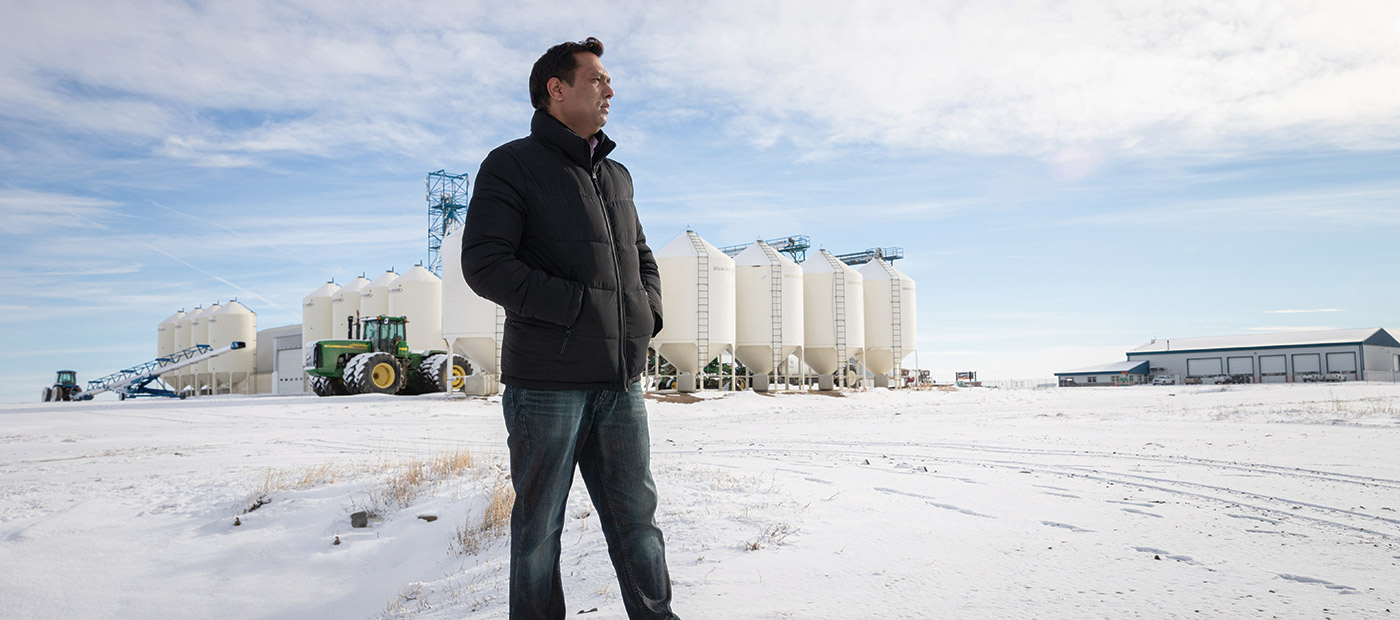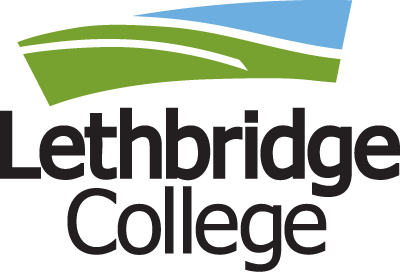When the summer fades to fall, farmers across southern Alberta turn to the hard work of harvest, enduring early mornings, late nights and all kinds of weather to bring their crops in from the field and get ready for the market. But the story doesn’t end there: the time between a crop’s harvest and the finished product hitting the dinner table is rife with challenges. Even in a good year, crop losses after harvest can have a significant impact on the bottom line for producers.
Finding ways to cut those losses will be the focus of Dr. Chandra Singh’s research at Lethbridge College. Singh joined the college’s Centre for Applied Research, Innovation and Entrepreneurship (CARIE) as its first applied research chair in Agricultural Engineering and Technology in the summer of 2019. Dr. Singh’s work will include the creation of an Advanced Postharvest Innovation program. The program will be dedicated to building partnerships with the agriculture industry and researching new ways to handle and store crops after harvest in order to minimize postharvest losses.
Southern Alberta farmers had an especially tough year in 2019, with dry conditions over the summer turning to cold and early snow in the fall resulting in many crops never leaving the field. Provincewide, 11 per cent of all crops went unharvested, but southern Alberta farmers were particularly hard hit with 15 per cent of the potato crop and 45 per cent of the sugar beet crop left in the field. During years like this, it’s vital for farmers to make the most of the crops they do get, which is where Dr. Singh’s work on postharvest techniques like drying, cooling and storage comes into play.
Dr. Singh grew up on a small family farm in northern India and went on to complete an undergraduate degree in Agricultural Engineering, a master’s degree in Postharvest Engineering and a PhD in Biosystems Engineering. He was most recently an associate professor of Engineering at the University of Southern Australia, but it was during his five-year stint with OPIsystems, a grain management technology company based in Calgary, when he identified the potential for expanding postharvest research in Alberta.
“Agriculture is so strong in this region, but no one is really taking on this particular issue,” says Dr. Singh.
His short-term focus is on building research infrastructure, accessing funding and developing partnerships with growers and industry groups, including the Alberta Sugar Beet Growers (ASBG) and Potato Growers of Alberta (PGA). Both crops are important parts of southern Alberta’s agricultural sector. Alberta produces around 20 per cent of Canada’s spuds and southern Alberta is home to Canada’s only sugar beet processing plant, the Lantic Sugar operation in Taber.
Each crop faces its own unique challenges when it comes to postharvest crop management. For example, sugar beets are one of the only crops to be stored outdoors, says Melody Garner- Skiba, ASBG’s executive director. “There are seven receiving stations that growers send their sugar beets to where they are stored in large piles before processing,” she says. “It doesn't make sense for our farmers to build storage bins because the return on the beets just isn't there to be able to afford to do that and still have a profitable business.”
Garner-Skiba says this type of storage makes sugar beet crops vulnerable to temperature changes and moisture. Currently crops are monitored weekly, but Garner-Skiba says the ASBG is hoping partnering with Dr. Singh and CARIE will lead to new solutions. “We're really going to be looking for [Dr. Singh’s] expertise to think outside the box and to give us suggestions for how we can try to mitigate nature as much as possible.”
For potato farmers, the issue is maintaining quality over a long period between harvests. “It’s a once a year crop but the demand is year-round,” says Thomas McDade, PGA’s agricultural director. “A potato harvest is a rest home, not a hospital, so storage is a critical concern.”
McDade says potatoes are stored in bins that can hold as much as 3,000 tons. A bad batch can end up potentially spoiling hundreds of tons of product. “How we store potatoes has a significant impact on the profitability of our growers,” says McDade. “Supporting work like Dr. Singh’s is a way to get our membership to develop relationships and ultimately gain an understanding of the value of research.”
Once underway, Dr. Singh’s research will rely heavily on technology, including remote sensing, automation, artificial intelligence, and mathematical modelling. “We can’t control Mother Nature, but if you have good infrastructure and are proactive, you can plan ahead and reduce the risks,” says Dr. Singh. “We can look at everything from the soil condition, weather condition, all of the inputs to the crop, when we harvest and at what conditions, where we store and process and we can use technology to come up with the best solutions or recommendation for the industry as well as for growers.”
“We can’t control Mother Nature, but if you have good infrastructure and are proactive, you can plan ahead and reduce the risks”
{ Dr. Chandra Singh }




